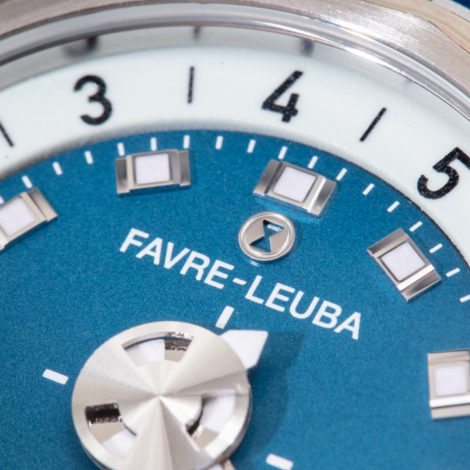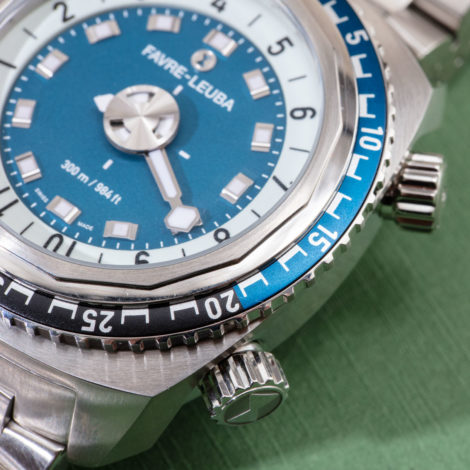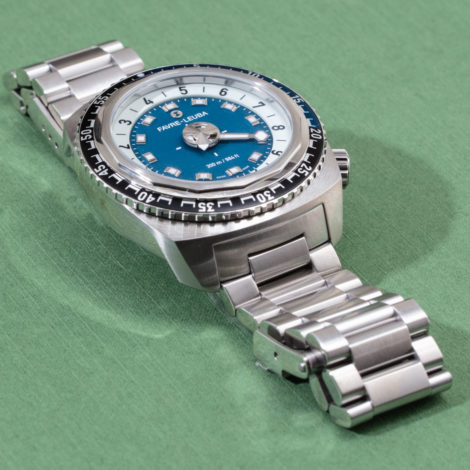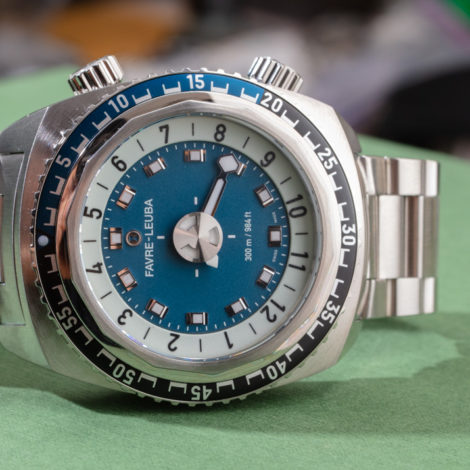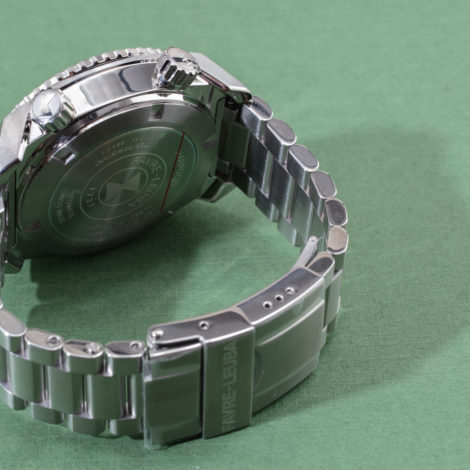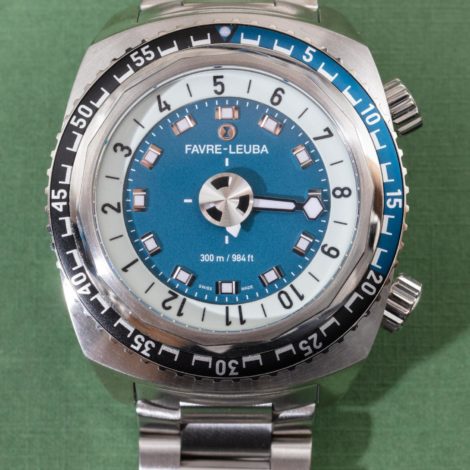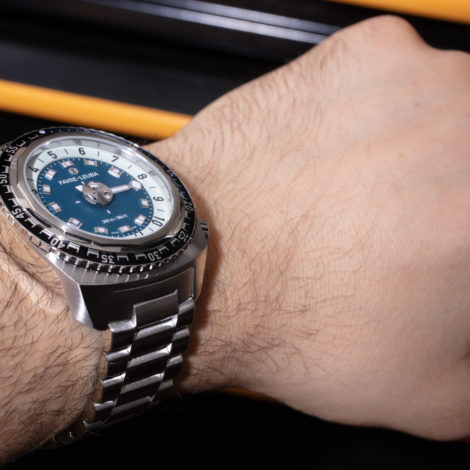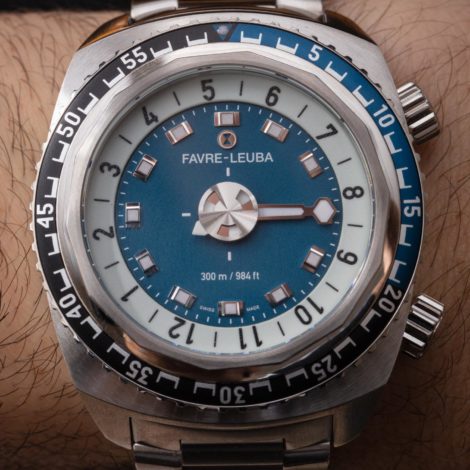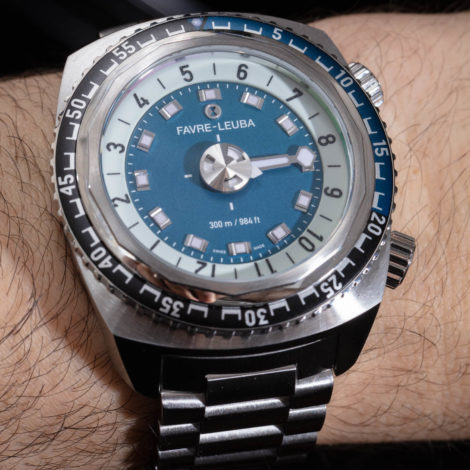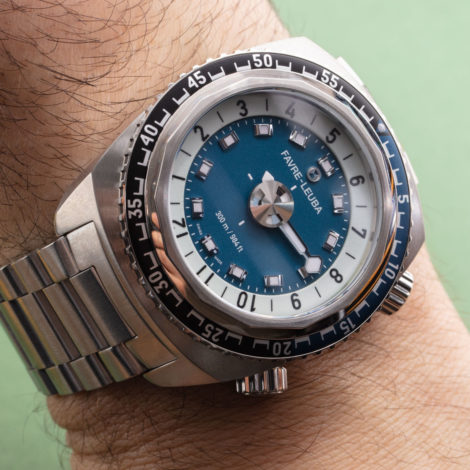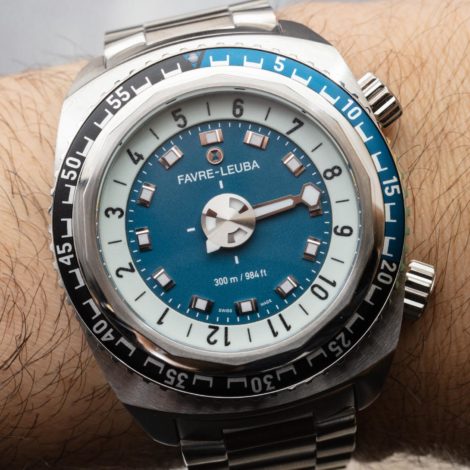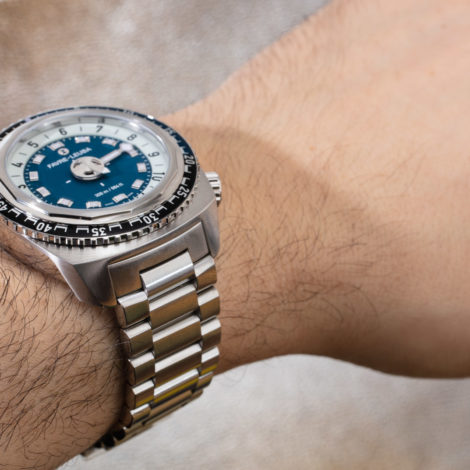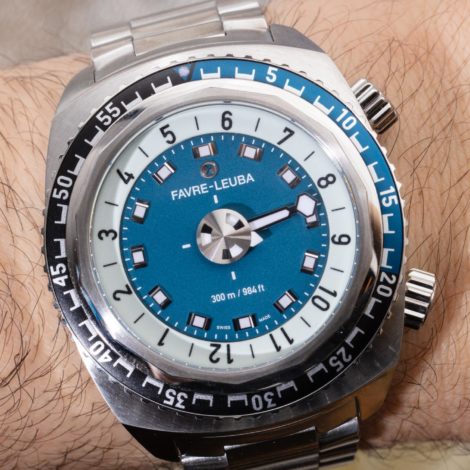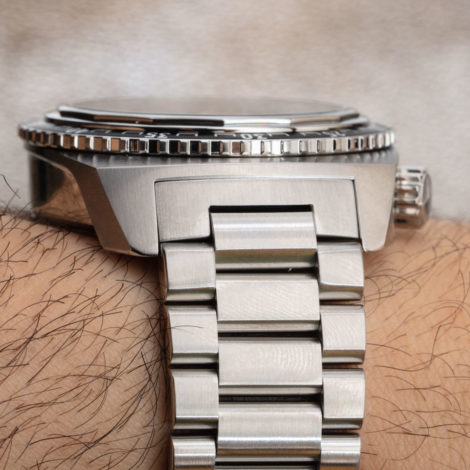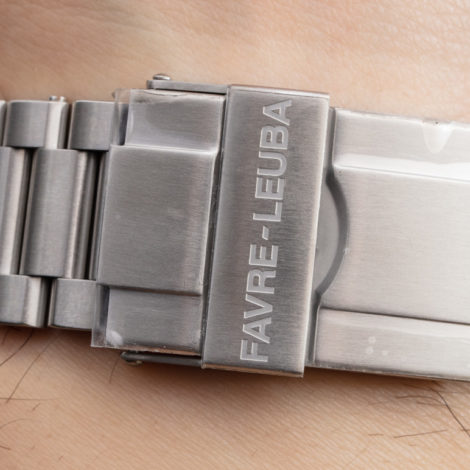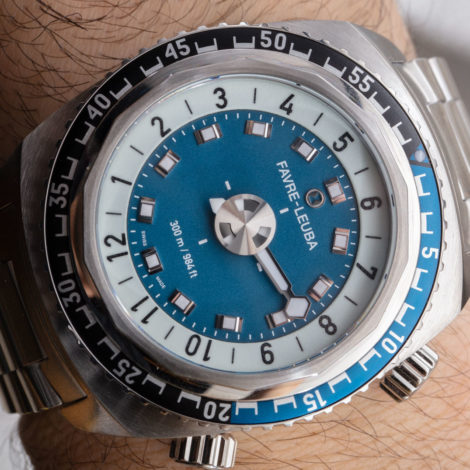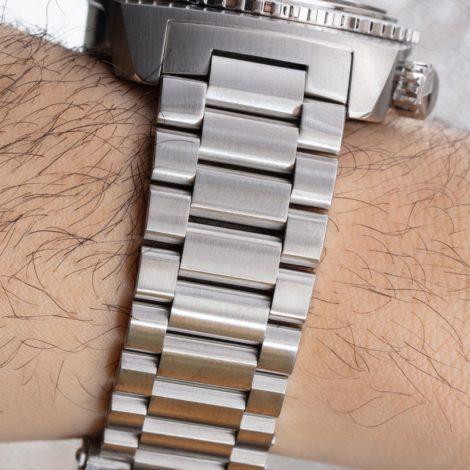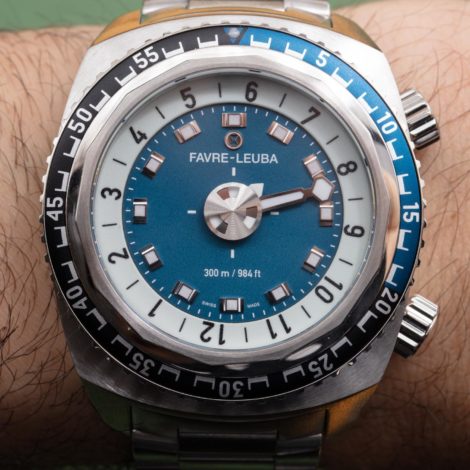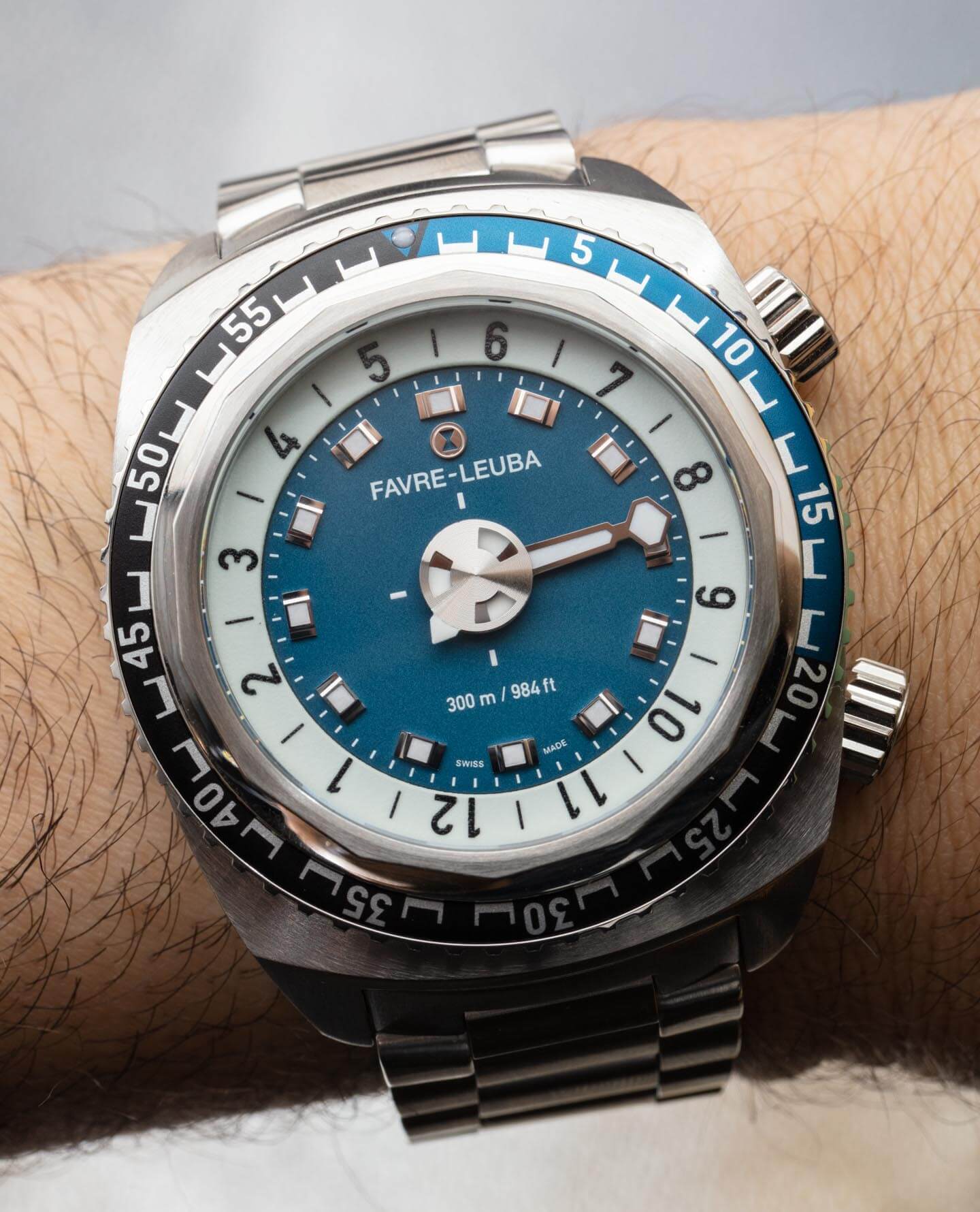
Back in 2017, I reviewed one of the most interesting diver-style watches currently on the market with the Swiss Favre-Leuba Raider Harpoon (aBlogtoWatch review here). Similar to the brand’s other dive watches visually, the Favre-Leuba Raider Harpoon was distinctive when it came to how it indicated the time. The time-telling system should probably have a catchy name to explain how it works, but I’ll describe its operation for you. In essence, it removes the hour hand entirely and replaces it with a disc. The disc moves around the dial but requires the minute hand to accurately identify the time.
The hour hand both indicates the hours and minutes. How is that possible? It works because the hour disc moves in a manner such that the minute hand points to the correct hour while also pointing to the current minutes as indicated normally. Seconds are indicated by a rather small spinning disc (with an arrow hand on it) that is centrally mounted. In fact, most of the people I’ve shown this watch to ask the question, “Why is the hour hand so little?” It is a fair question because it isn’t at all immediately obvious that there is an hour-indicating disc.
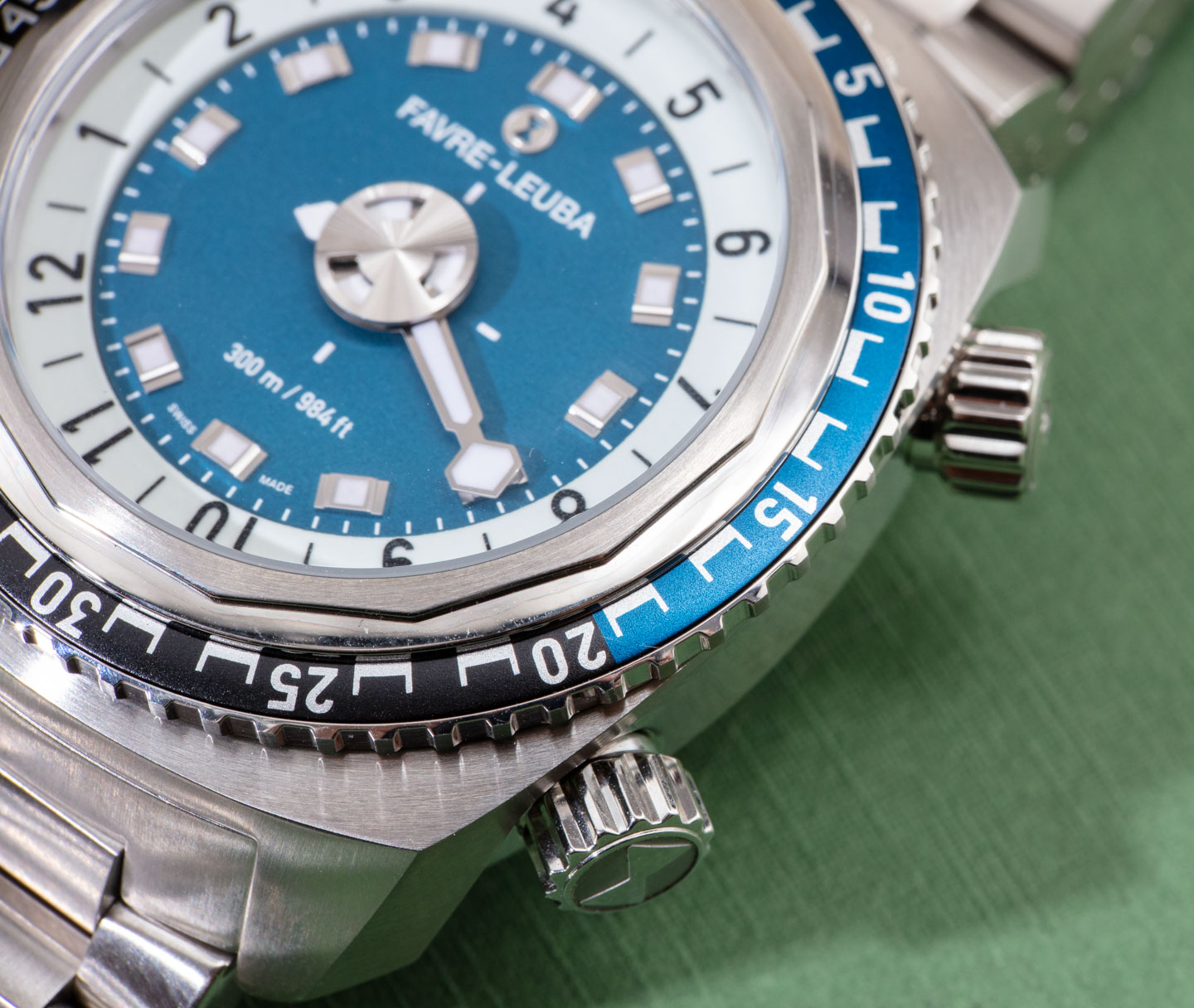
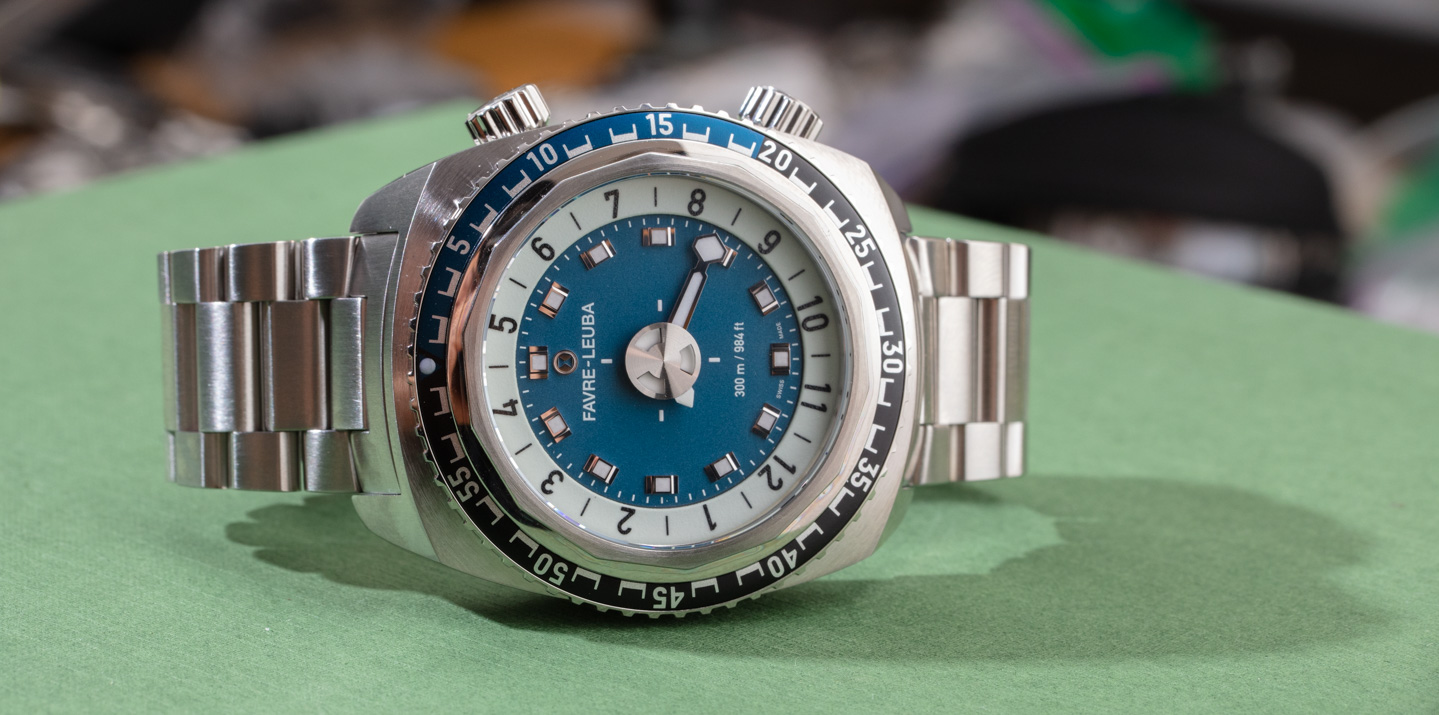
To tell the time, you simply look at the where the minute hand is pointing to determine first the minutes and then the hour by seeing which two hour indicators the hand is between. This is somewhat different from how time is traditionally indicated with hours first and minutes second. That said, once you get used to the “traveling hour disc,” this system becomes both very legible and continues to feel effortlessly clever. Wearers of the Favre-Leuba Raider Harpoon can also marvel at how virtually no one can read the time without a basic explanation, even though after learning the system there is never a question as to what time it is.
Favre-Leuba was so invested in the success of the Raider Harpoon that is was offered in a number of colors and with various strap options. No doubt the watch was special and offered something novel and fun that the market was supposed to love. Only the original Raider Harpoon (still produced today) was, unfortunately, a bit too large for a large number of wrists with a case size of 46mm-wide. It isn’t even that 46mm-wide is terribly large, but with the case thickness and wide lug structures, the 46mm-wide Raider Harpoon was mostly reserved for the beefiest of wrists. Favre-Leuba quickly got the point and development of a smaller Raider Harpoon was forthcoming. That watch is now here with the Favre-Leuba Raider Harpoon 42 — and I have to say that I think the company finally got the Raider Harpoon size just right.
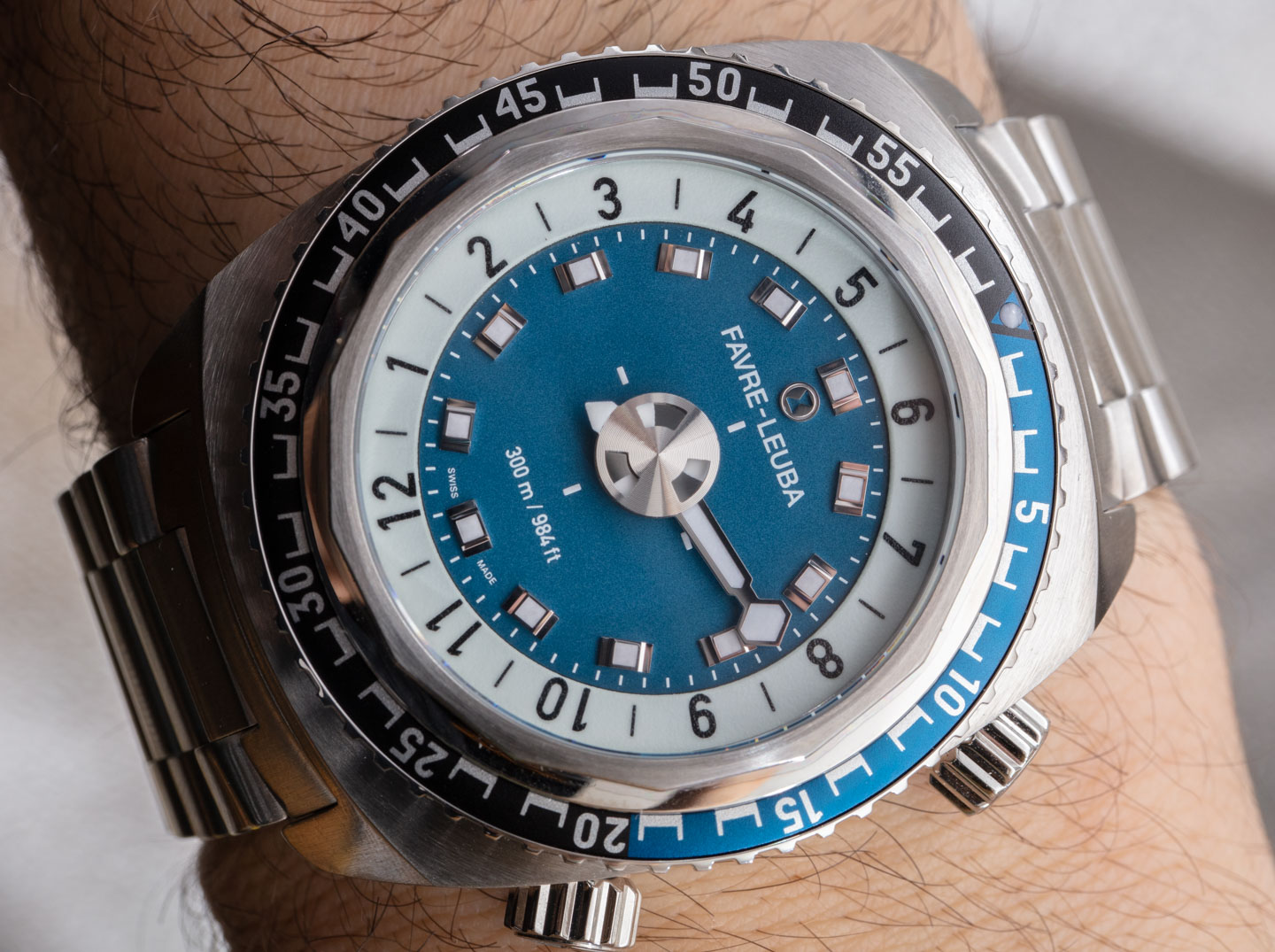
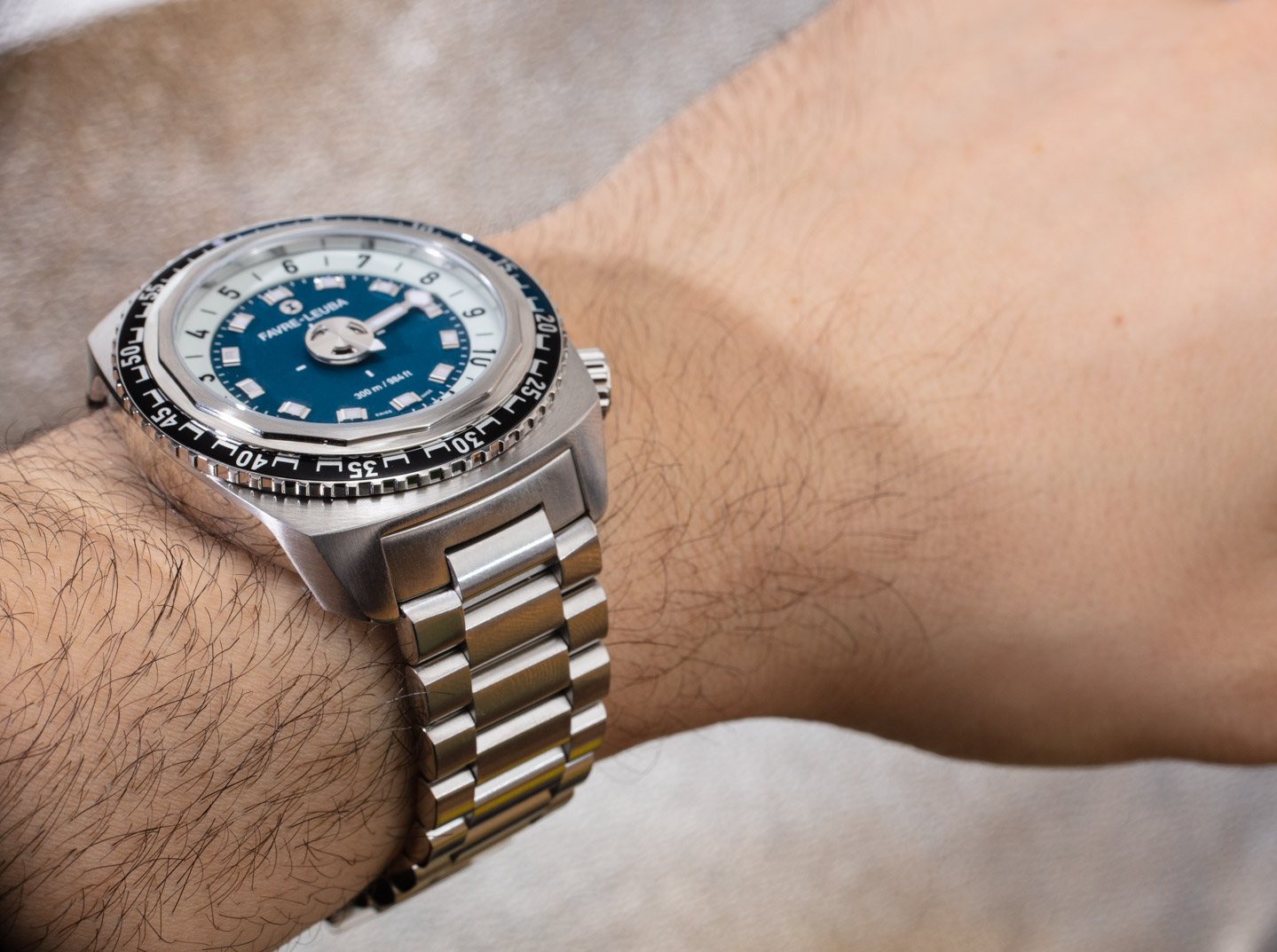
On my wrist here is the Favre-Leuba Raider Harpoon 42 reference 00.10131.08.52.20 with a blue-themed dial and on the matching steel bracelet. The only two differences between this and the Original Raider Harpoon 46 watch are the downsized case and a bit less water resistance. This latter fact barely matters for all practical purposes, to be honest, as the original Raider Harpoon 46 is water-resistant to 500 meters, while the Raider Harpoon 42 is water-resistant to 300 meters — still entirely suitable to make it an authentic diver’s watch.
Even as a smaller watch, the Raider Harpoon 42 is not a small timepiece. The brand-distinctive polished and brushed steel case is 42mm-wide, about 15mm-thick, and has a 50mm lug-to-lug distance. Over the dial is an AR-coated sapphire crystal, and the steel bracelet drops down immediately at the lugs, making the watch suitable for the vast majority of wrist sizes. If the Raider Harpoon 46 was suitable for maybe 20% of male wrist sizes, the Raider Harpoon 42 is suitable for about 80% of male wrist sizes out there, in my experience (including larger wrists).
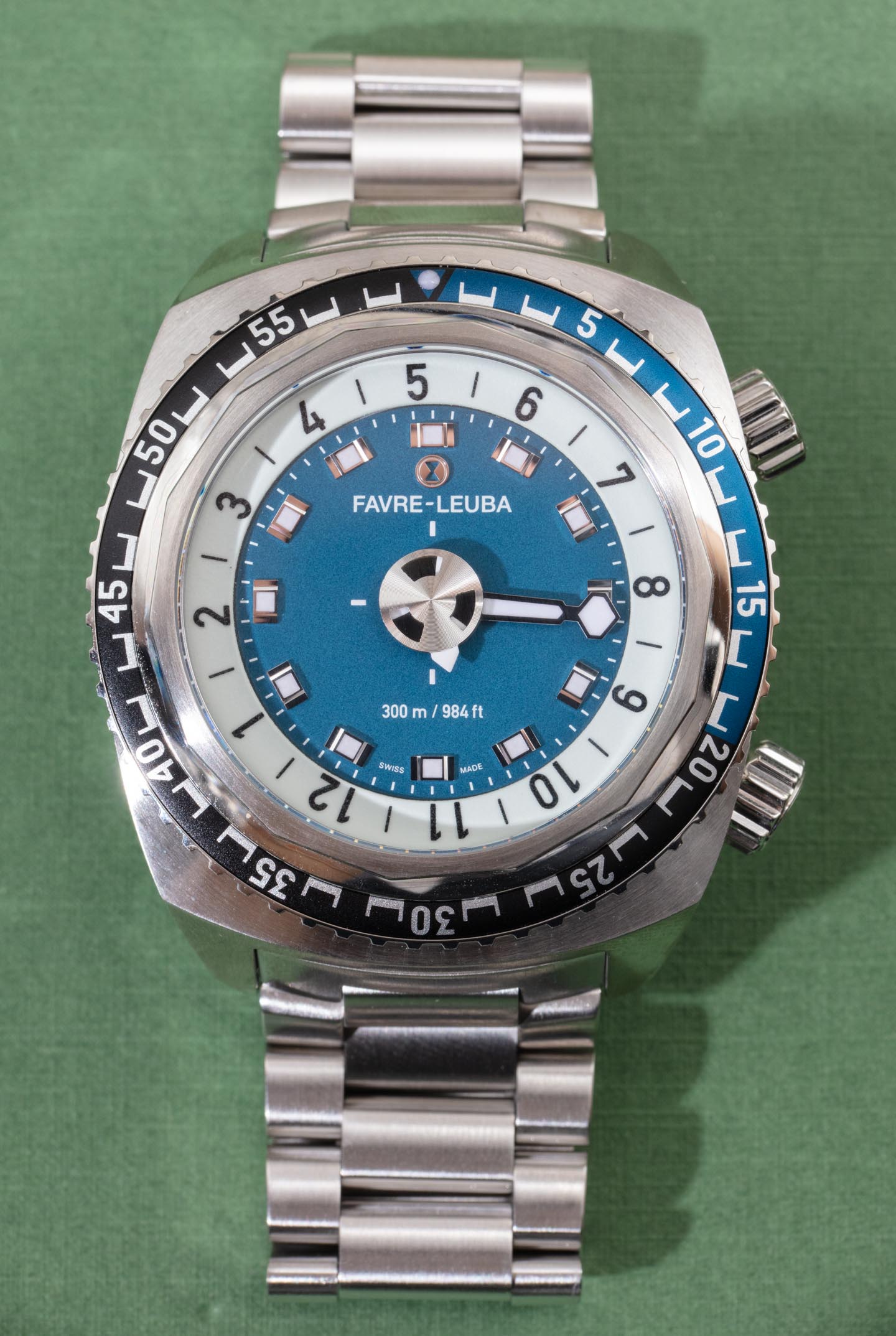
To understand the overall design of the watch, it is useful to inspect the look of vintage Favre-Leuba watches from around the 1970s. Today’s Favre-Leuba brand has channeled a lot of the interesting quirkiness of the brands older sport watches into its modern watches today. The style isn’t for everyone, but I happen to like it a lot, and it grows on you to be honest. There is a lot to like here from the overall shape of the case to the design of the bezel and of course the interesting looking dial. The unidirectional rotating diver’s style timing bezel is among the more 1970s-style elements of the overall design and is printed on an aluminum bezel insert. I would have preferred ceramic, of course, but the bezel insert is actually quite narrow and does help give the watch a more welcome retro vibe.
The 1970s era of sports watches is often typified by the use of bright colors and chunky, blocky elements such as hands and hour markers. That is all too true here and helps give the Raider Harpoon a very era-appropriate vibe. Favre-Leuba paints the minute and seconds hand with Super-LumiNova, and the entire hour ring itself is produced from a luminant material. This makes reading the time in the dark quite easy, assuming the luminant has been previously charged with light.
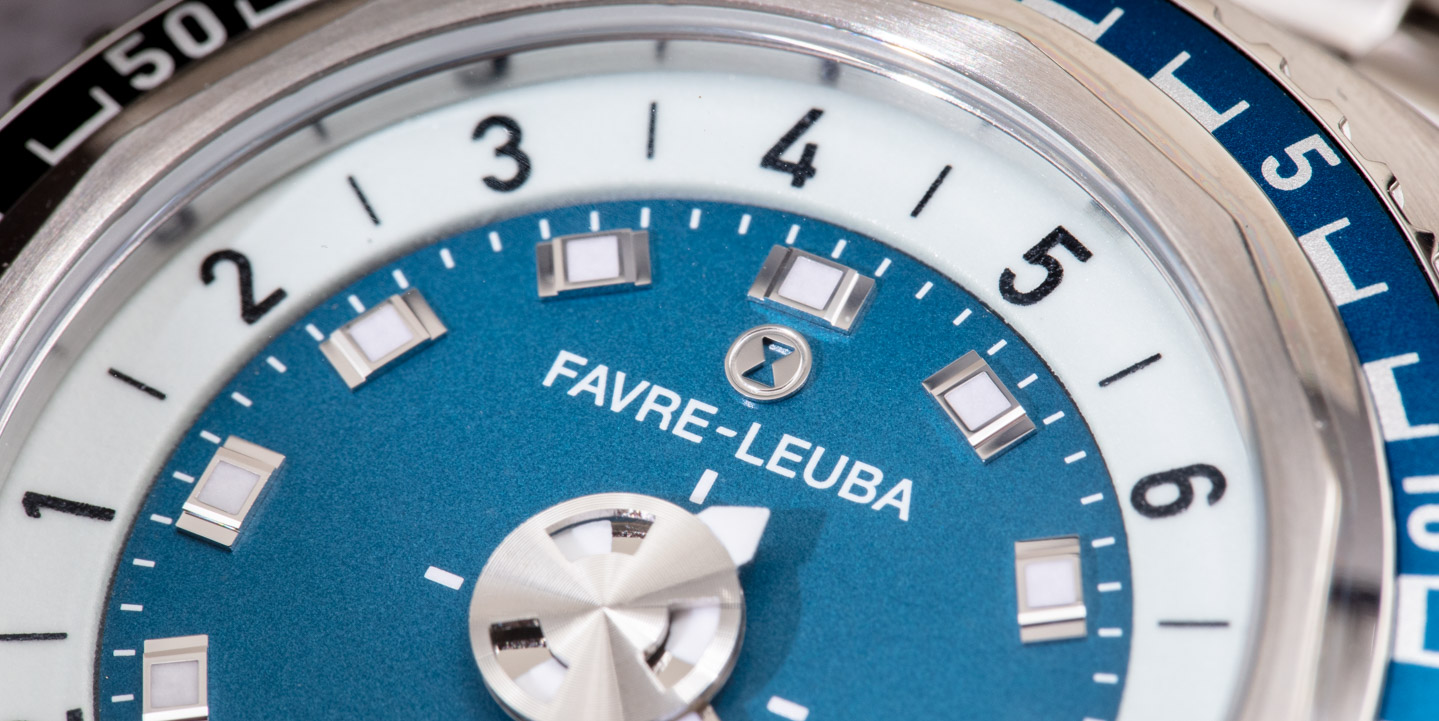
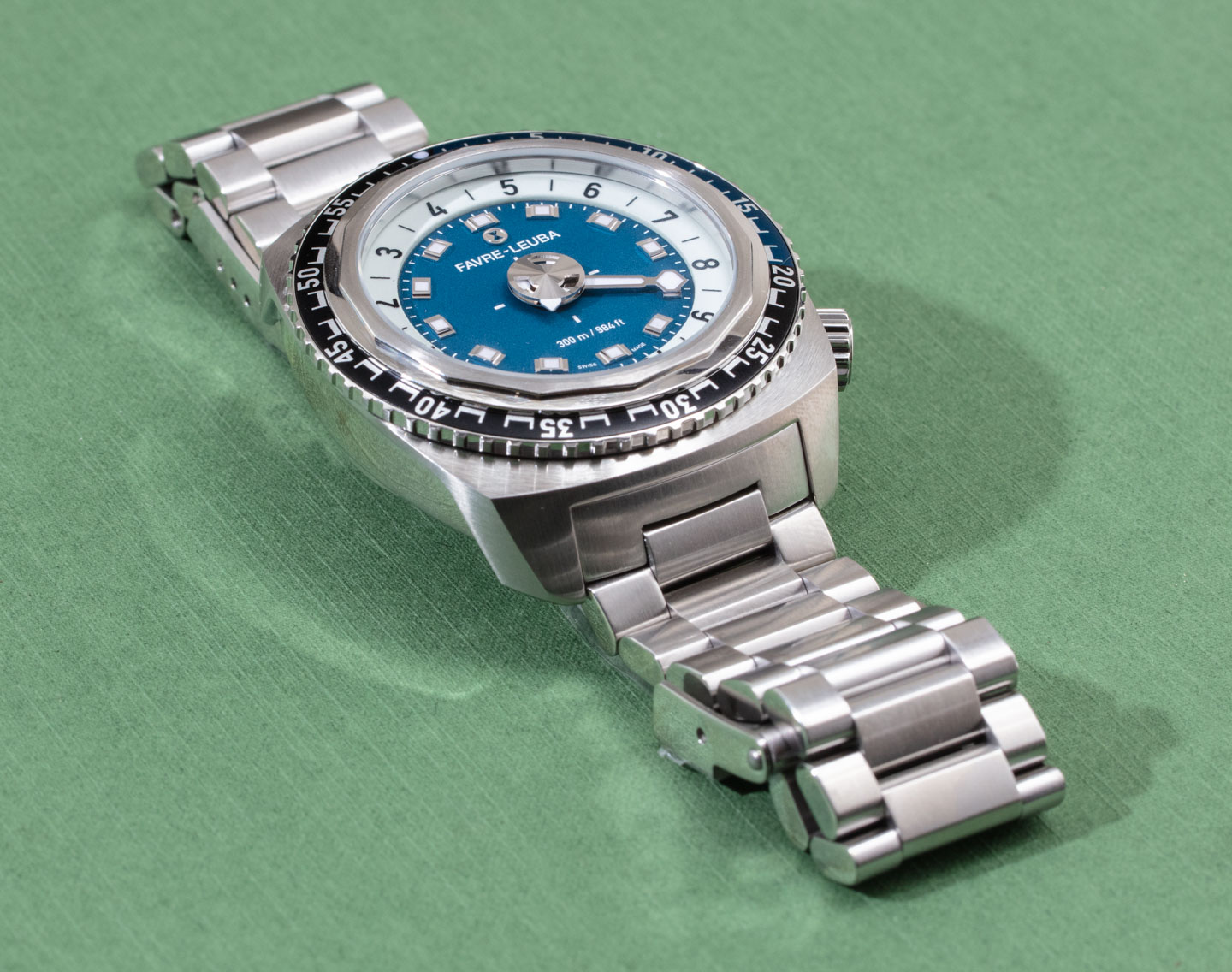
One of my original complaints about the Favre-Leuba Raider Harpoon 46 remains here. It isn’t so much of a complaint as it is a refinement issue. The goes back to the hour ring itself and your eyes being able to visually miss it too easily. What I mean is that the ring looks identical to what a stationary ring on a dial might look like. The reason why so many people fail to understand how to tell the time is that the ring simply looks as though it is supposed to be just some static peripheral dial ring. It isn’t until you pull out the crown and adjust the time that you see how the dial works. I’m not clear what the “solution” to this problem is, but I feel like the hour ring on a future Favre-Leuba watch with the same time-telling system should more immediately and visually look like something that moves. A good example is the hand on the dial. Hands are obviously things that move, so your eyes are drawn to them more so than elements on the dial, which appear to be static. Again, this isn’t that big a deal, but I think it would be interesting from a design perspective to see how one’s eyes can be more immediately educated now that the hour ring is a moving object to look at more closely.
The case has two crowns, which is a look I normally don’t like very much, but it doesn’t bother me here, interestingly enough. There’s only one crown you’ll ever use, though. The upper crown is actually a manual helium release valve — that is just a bit less useful than an automatic helium release valve, which itself is useful to a tiny percentage of people who wear diver’s watches and are special types of military or commercial divers who need to hang out in decompression chambers. The most famous watch to share this feature with the Favre-Leuba Raider Harpoon is the Omega Seamaster 300M (that also has a “vestigial” manual helium release valve). Why is it there? Style, for one — and it is something to talk about. Storytelling is often worth more in a watch than practical functionality in many timepiece-lover circles.
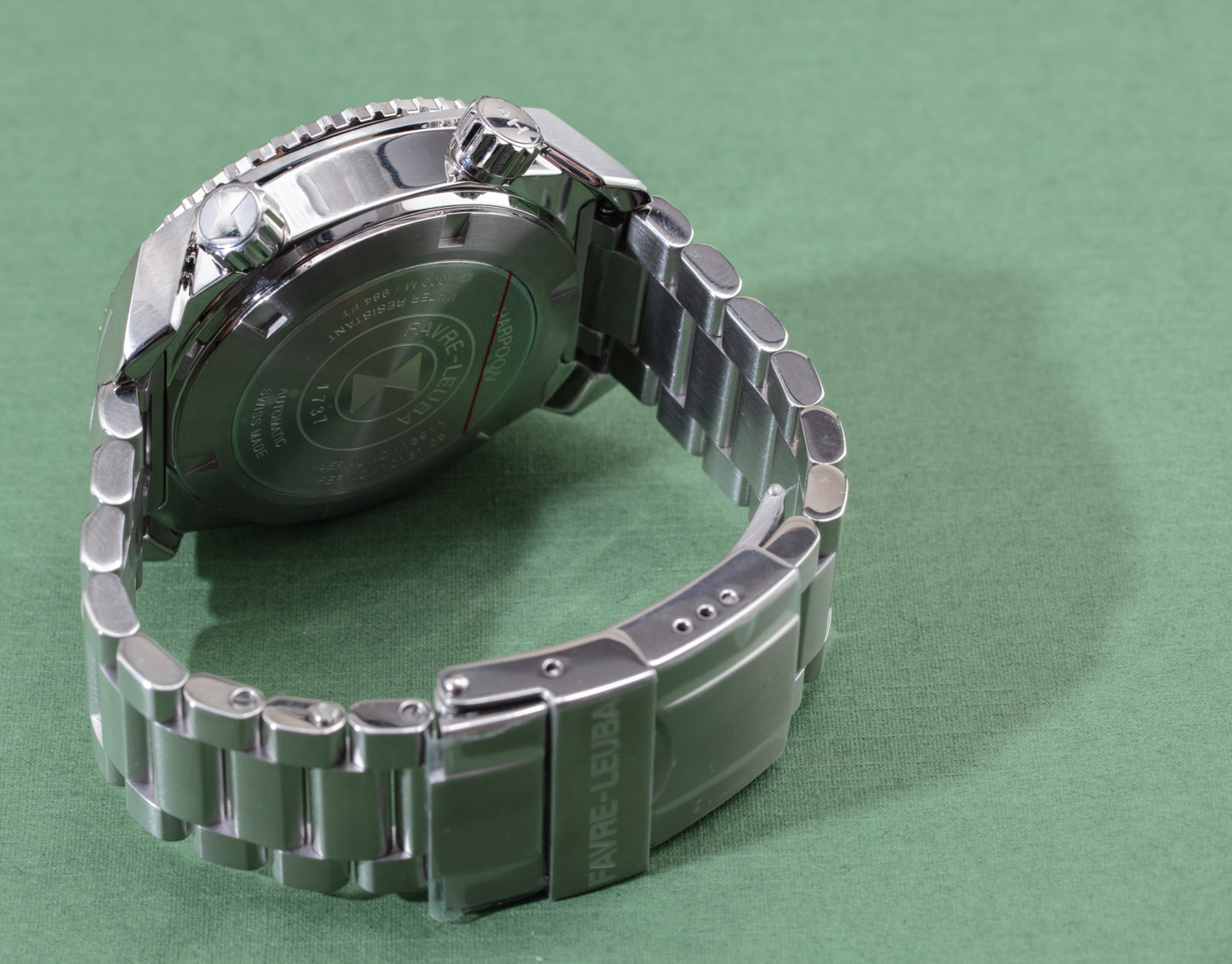
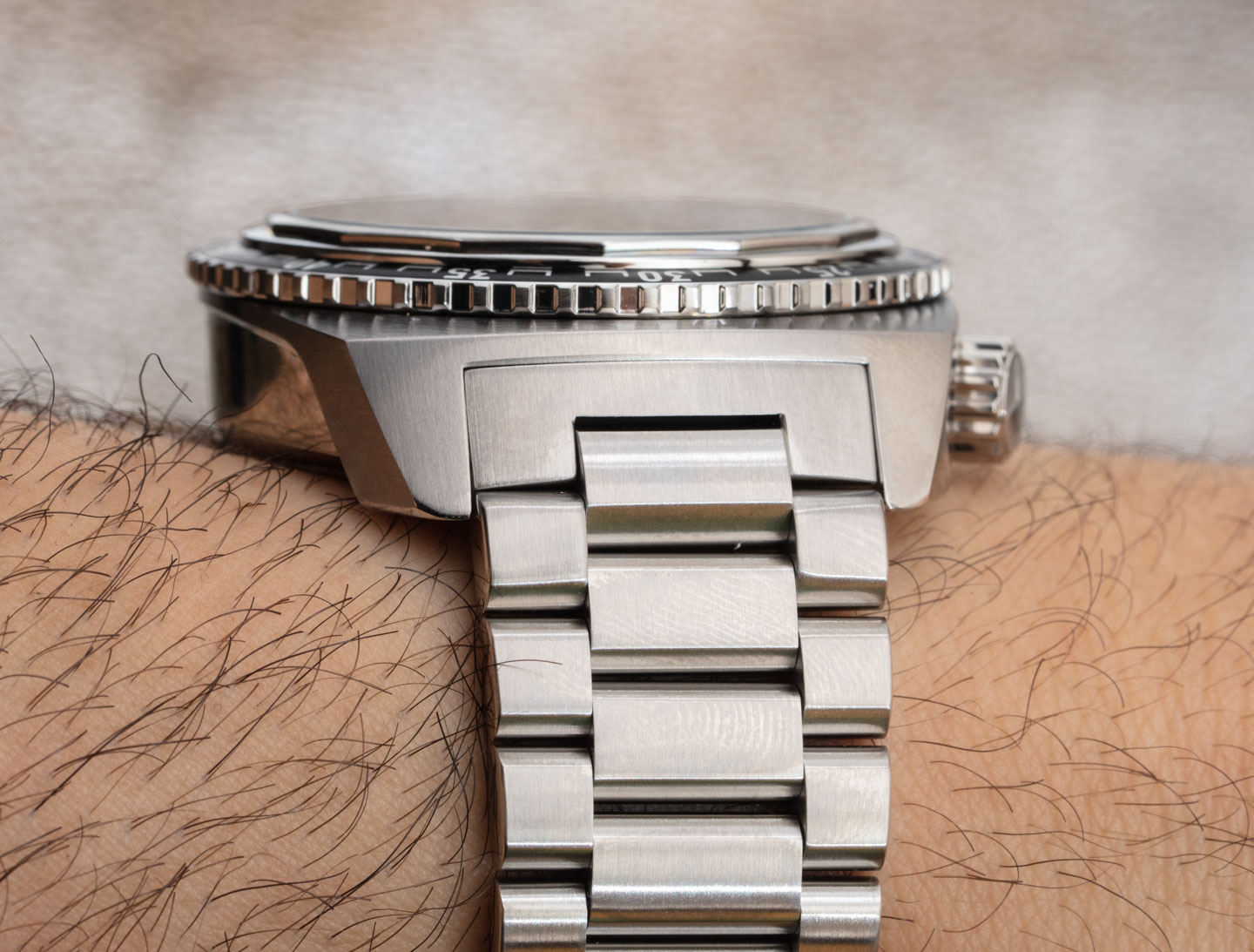
I really like the bracelet that Favre-Leuba marries to the watch, even though it is straightforward and simple. The links themselves are not that long, which means the bracelet uses more of them and articulates more comfortable on your wrist. The deployant buckle is nicely made and classic in its design. It is a fold-over safety clasp with a hidden diver’s extension. I also like the ability to micro-adjust the bracelet. I found the bracelet to be very comfortable on my wrist. Favre-Leuba also offers the Raider Harpoon 42 on a bespoke rubber or leather strap. Speaking of options, in addition to this blue, black, and white dial design, the Raider Harpoon has orange, black, and white options.
These blue-themed dial versions of the Raider Harpoon 42 only come with the natural steel case, but the orange-accented dials are available either in a natural or gunmetal black PVD-coated steel case, though these latter dark-colored case models do not have an available matching gunmetal PVD-coated bracelet option.
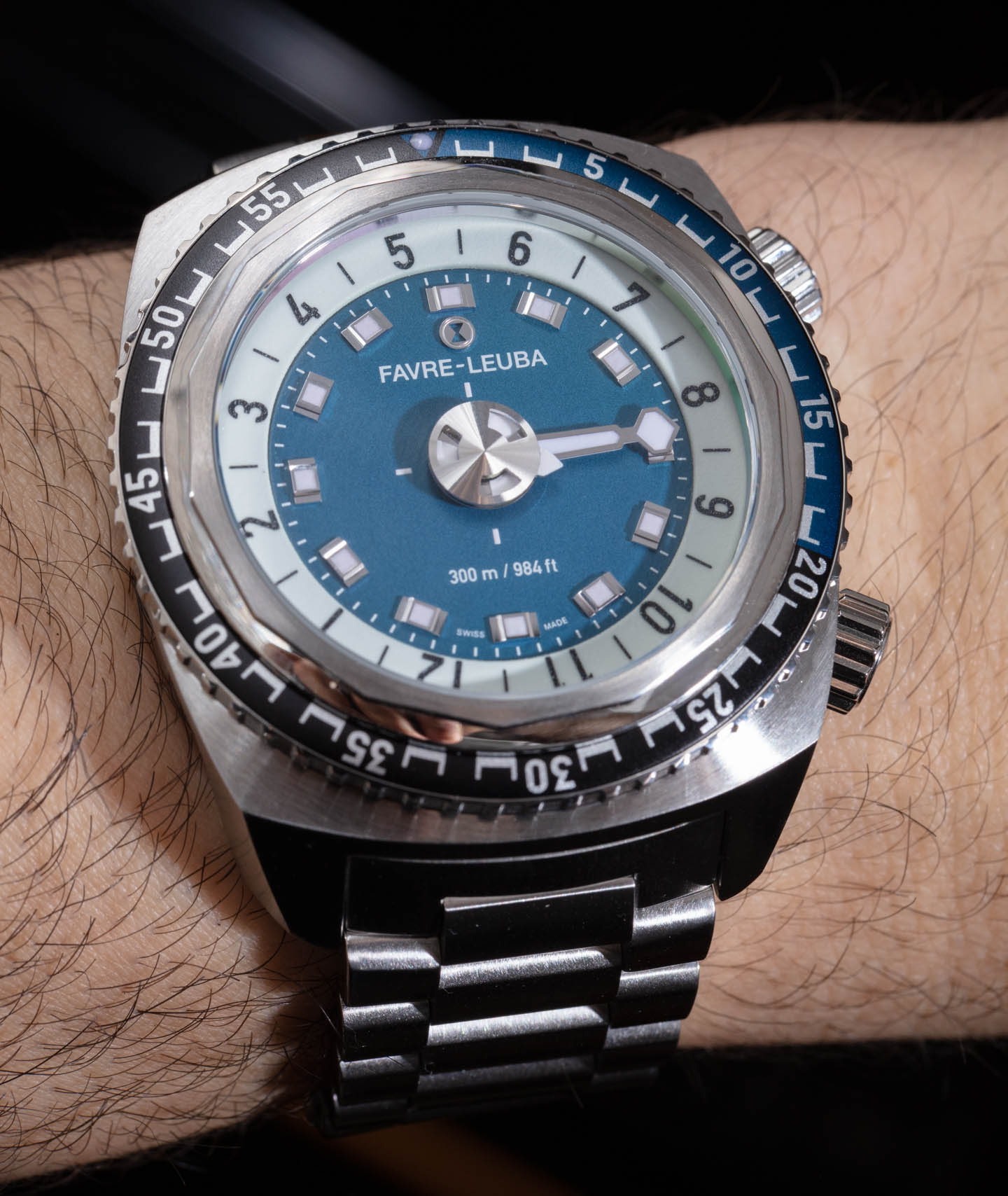
Powering the watch is a base Swiss Made Sellita SW200 automatic movement (4Hz, with about 42 hours of power reserve), that uses a proprietary module that allows it to indicate the time in this special manner. This is one of the reasons the case is so thick, but again I think the beefy proportions work in favor of the overall design. On the caseback, there is, unfortunately, no view of the movement, but each of the watches does have a unique serial number — which is actually not universal even on many luxury timepieces. I also found it useful that Favre-Leuba included the actual reference number of the watch, which means that someone who has no idea what it is can easily look up information about it online. I point this out because, again, it is a non-standard and welcome feature.
Niche in some of the best ways possible, the Favre-Leuba Raider Harpoon 42 is now also much (much) more wearable (for more people) in the smaller 42mm-wide size. Whereas I wanted to wear the original Raider Harpoon more but could not because of the 46mm-wide size, I’ve been giving the Raider Harpoon 42 a lot more wrist time, given the excellent comfort as well as hip style. Price for the Favre-Leuba Raider Harpoon 42 in this reference 00.10131.08.52.20 is $3,950 USD. Learn more or order at the Favre-Leuba website here.

